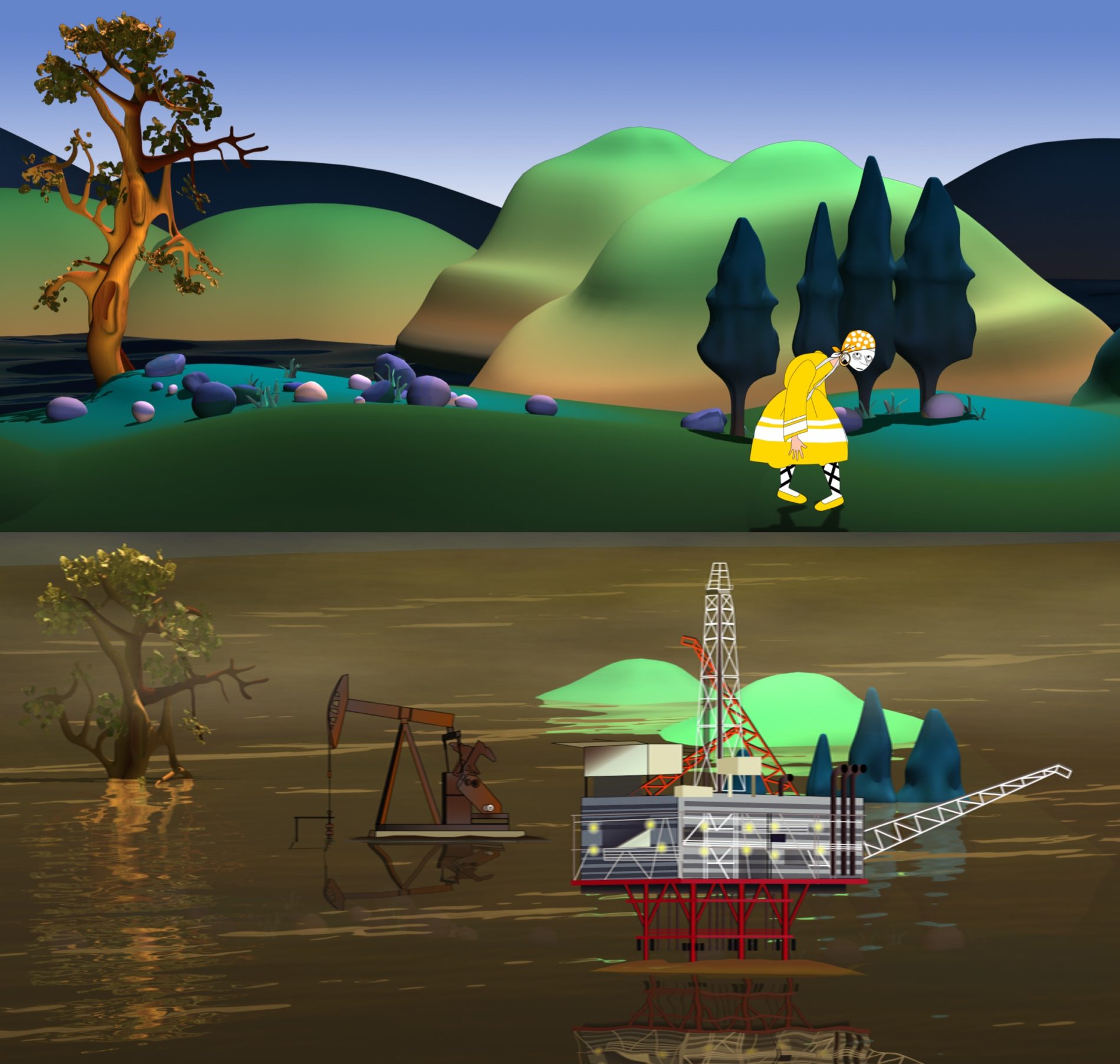Sabine Gruffat: A Kiss of the Earth
Share:
On view at the North Carolina Museum of Art in Raleigh is Sabine Gruffat’s A Kiss of the Earth (August 26, 2017–January 28, 2018), a three-panel video piece that is both interactive installation and performance, combining dynamic digital animation with music. The result is a microenvironment, a multisensory encounter that broadens the way we experience and interact with art, and that collapses layers of time and space to explore contemporary social issues through the lens of the past.
Based on Igor Stravinsky’s ballet The Rite of Spring, Gruffat’s video re-imagines this narrative of old-world-pagan sacrificial ritual designed to appease the gods and hasten the turning of the seasons. At the original work’s dark climax, a young girl rs in the ultimate show of allegiance, as her elders offer up her innocence and purity in exchange for abundance. Famously, The Rite of Spring, originally staged by Sergei Diaghilev of the Ballets Russes in 1913 Paris, brought unexpected sounds and movements to the high-art stage through “primitive” orchestrations and exotic, visceral choreography; the work’s first audience was so shocked that its members almost rioted at the premiere.
Sabine Gruffat, A Kiss of the Earth (still frame), 2014, three-channel interactive animation projection [courtesy of the artist]
Gruffat’s stylized, animated figures and accompanying music channel that energy as her characters dance across the video display, clad in traditional Russian attire. Their steps are clean and purposeful, creating bold, symmetrical formations that mirror the once-controversial movements first seen onstage a century ago. There is a sense of gravitas in these movements’ immediacy, and an absence of freedom manifest in their puppet-like actions.
Gruffat’s colorful visuals swell and collapse in conjunction with a digitized arrangement of Stravinsky’s score, which emanates into the gallery, bridging the distance between picture plane and viewer. At times energetic, at times unsettling, the sights and sounds converge into one integrated sensory experience. A Kiss of the Earth takes place over two acts, but as the story unfolds, the plot follows an unconventional arc mandated by technology, environmental variables, and the viewer. Act one syncs its environment with real-time weather data in Paris, the site of the original production of The Rite of Spring. Rain in Paris triggers rain in the video, and sun produces clear skies. In this manner, the work places viewers in touch with a setting and culture they aren’t experiencing in person. It connects us with things happening concurrently in our universe, while calling attention to how far removed we are from events not in our field of vision.
Gruffat pushes the envelope further in the second act, which can be set in motion at any point in the loop via direction from a text message. Visitors simply text “sacrifice” to the number on the museum wall, and they immediately witness a visual and sonic metamorphosis. Murky, oily water floods the vibrant, saturated landscape now peppered with puffing silos, oil derricks, and other structures that move in time with the increasingly foreboding music. The dancers disappear, to be replaced by militaristic figures.
This interactive feature offers the audience a tangible way to participate in the piece, while also activating their sense of touch. The act of texting “sacrifice” was disconcerting: it endows the dialers with malevolent power and provokes them to use it, implicating viewers not simply in the narrative but also in a moral dialogue.
Gruffat weaves notes of Stravinsky’s historic, revolutionary piece into a multisensory technological display that speaks to the contemporary aesthetic of the digital age. In doing so, she asks us to reflect upon the concept of sacrifice as it might apply to current culture, or as it might be enacted, whether involuntarily or consciously, at the hands of external powers. She brings to light the dissonance that persists around the world as nameless, faceless corporate and political forces exert control over our environment, society, and civilization as a whole. A Kiss of the Earth thus considers how we in America and the West can reconcile our supposedly enlightened sense of morality with behavior that exploits the land and various populations, while we inhabit familiar spaces far out of view of these abuses. The work repurposes a primal folk tale to reveal how the actions of a powerful few affect the lives of many, and it shows viewers that by going along with the story, they display a willingness to sacrifice an individual—or an individual’s well-being—for what they are told is a greater good.
